Temukan Istana Kerajaan Madrid: Panduan Wisatawan
Jelajahi Istana Kerajaan Madrid dengan mudah
Ibu kota Spanyol yang semarak, Madrid, merupakan harta karun berupa sejarah, budaya, dan kemegahan arsitektur. Salah satu bangunan penting kota ini adalah Istana Kerajaan Madrid (Palacio Real de Madrid), sebuah monumen megah yang berdiri sebagai bukti masa lalu kerajaan Spanyol yang kaya. Saat Anda merencanakan perjalanan ke kota metropolitan yang memesona ini, pastikan untuk memasukkan Istana Kerajaan dalam rencana perjalanan Anda.
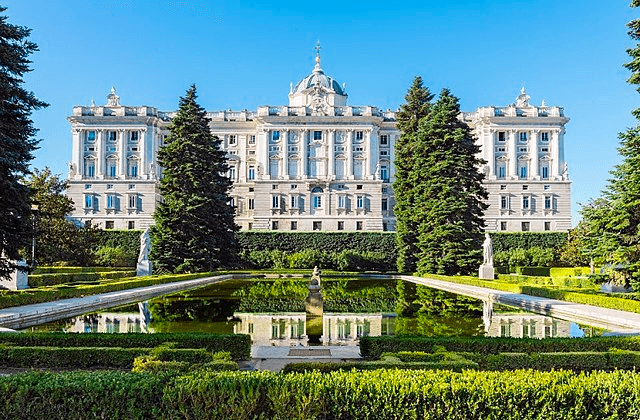
Sejarah Istana Kerajaan Madrid
Istana Kerajaan Madrid dibangun di lokasi Alcazar, benteng Moor abad ke-9 yang kemudian diubah menjadi kediaman kerajaan oleh raja-raja Spanyol. Setelah kebakaran hebat pada tahun 1734, Raja Philip V memerintahkan pembangunan istana baru, yang selesai pada tahun 1755. Dirancang oleh arsitek Italia Filippo Juvarra dan Giovanni Battista Sacchetti, gaya megah istana ini mencerminkan pengaruh periode Barok dan Neoklasik.
Saat ini, Istana Kerajaan Madrid merupakan kediaman resmi Keluarga Kerajaan Spanyol, meskipun saat ini mereka tinggal di Istana Zarzuela yang lebih kecil dan lebih sederhana. Istana Kerajaan kini utamanya digunakan untuk upacara kenegaraan, acara resmi, dan acara besar lainnya.
Menjelajahi Halaman Istana
Istana Kerajaan Madrid dikelilingi oleh taman-taman yang indah, sehingga menjadi lokasi yang ideal untuk berjalan-jalan santai. Taman Sabatini di sebelah utara dan Taman Campo del Moro di sebelah barat merupakan tempat yang sangat bagus untuk menikmati bagian luar istana yang menakjubkan. Selain itu, Plaza de Oriente di dekatnya menawarkan pemandangan fasad istana yang spektakuler, serta berbagai patung yang menggambarkan raja-raja Spanyol di masa lalu.
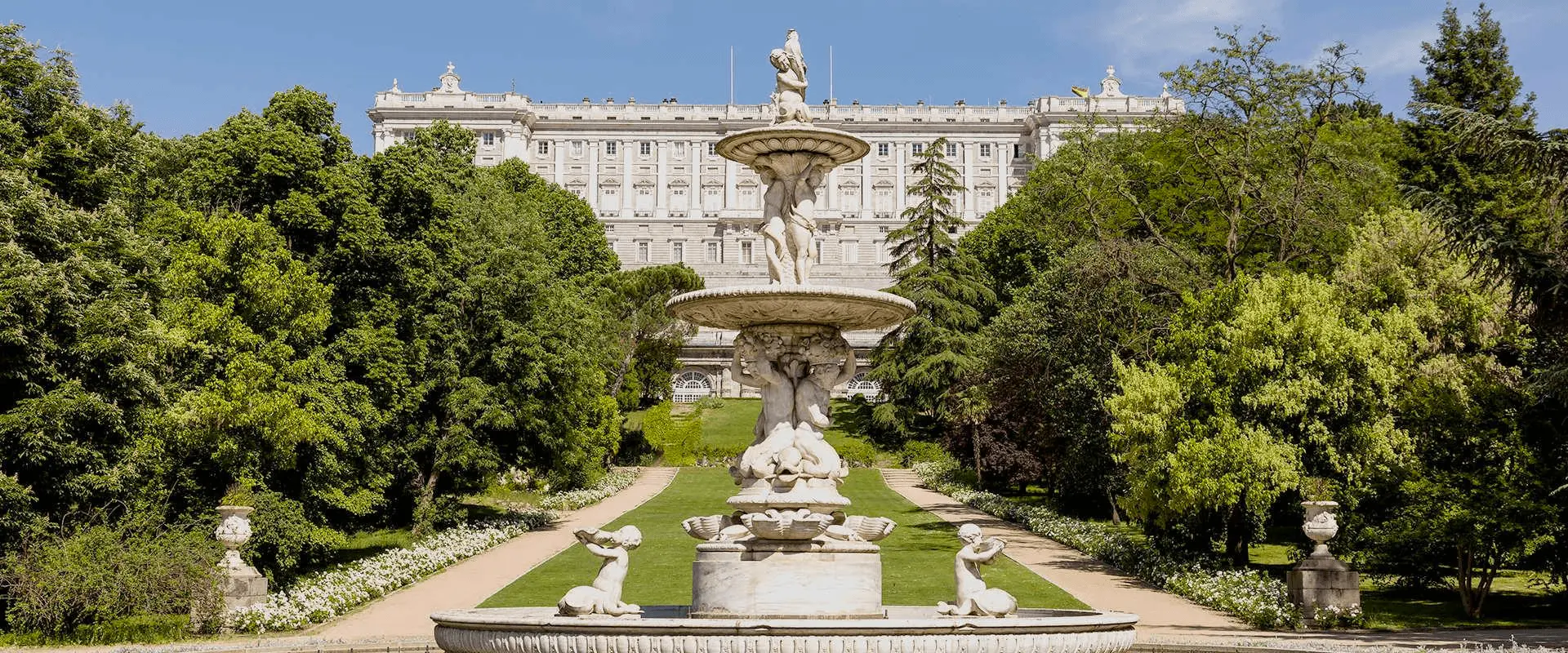
Sebagai pengunjung, Anda akan dapat menjelajahi beberapa ruangan di dalam istana, yang masing-masing memancarkan kemewahan dan keanggunan. Beberapa area yang wajib dikunjungi antara lain:
Ruang Tahta
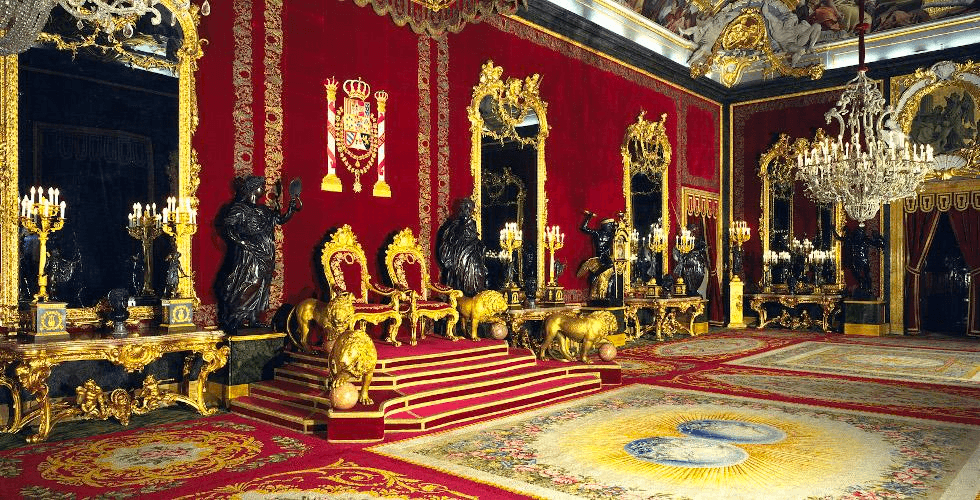
Dihiasi dengan lukisan dinding mewah karya seniman Italia Giovanni Battista Tiepolo, Ruang Tahta berisi singgasana Raja Felipe VI dan Ratu Letizia, serta koleksi harta kerajaan yang mengesankan.
Aula Cermin
Seperti halnya Hall of Mirrors yang terkenal di Istana Versailles, Istana Kerajaan Madrid memiliki Hall of Mirrors sendiri. Ruangan ini merupakan tempat para raja dan ratu berpakaian, dan menampilkan serangkaian cermin berkilau dan lampu kristal, yang menciptakan efek yang memukau.
Tangga Utama
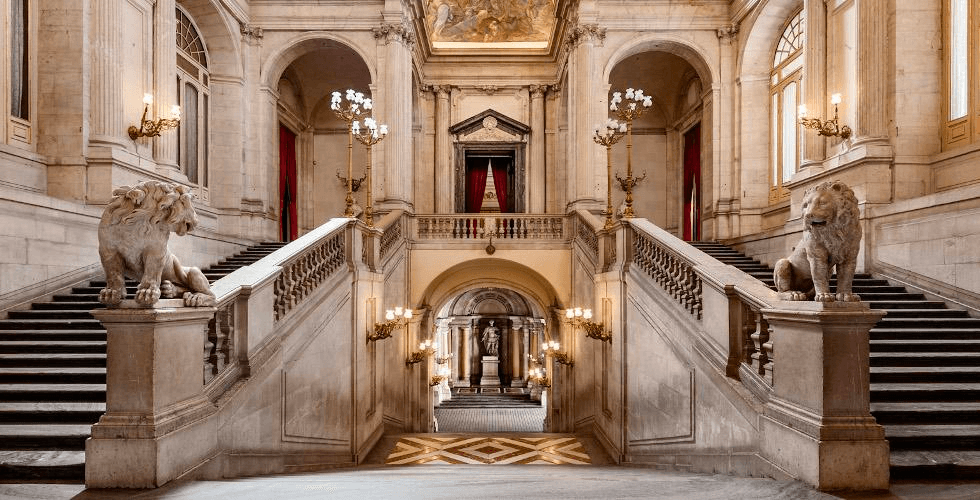
Dirancang oleh arsitek Francesco Sabatini, tangga utama istana ini merupakan fitur arsitektur yang memukau. Menaiki tiga lantai, tangga dengan lebih dari 70 anak tangga marmer ini memiliki pegangan tangan perunggu berlapis emas, dan lukisan dinding yang mengagumkan di langit-langit karya pelukis Italia Corrado Giaquinto.
Kapel Kerajaan
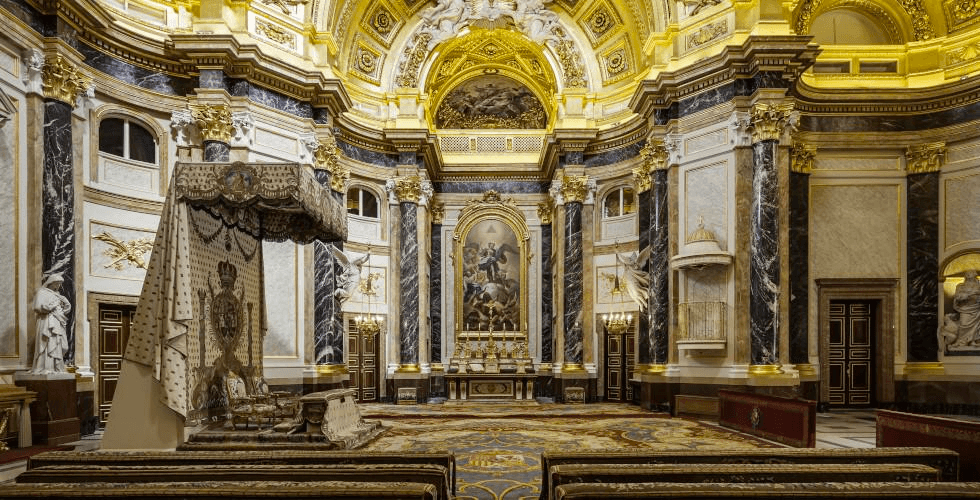
Kapel yang indah ini merupakan salah satu ruangan paling mengesankan di Istana Kerajaan. Kapel ini menyimpan koleksi karya seni keagamaan, termasuk lukisan dinding karya pelukis Italia Corrado Giaquinto. Luangkan waktu untuk mengamati detail kubah yang rumit.
Ruang Gasparini

Dinamai sesuai dengan nama perancangnya, Mattia Gasparini, ruangan yang indah ini memamerkan dekorasi bergaya Rococo yang rumit, termasuk plesteran berlapis emas, kain yang mewah, dan lukisan dinding yang mewah. Ruangan Gasparini dulunya digunakan sebagai kamar pribadi Raja Carlos III dan kini dianggap sebagai salah satu ruangan istana yang paling berhias dan menakjubkan secara visual.
Gudang Senjata Kerajaan
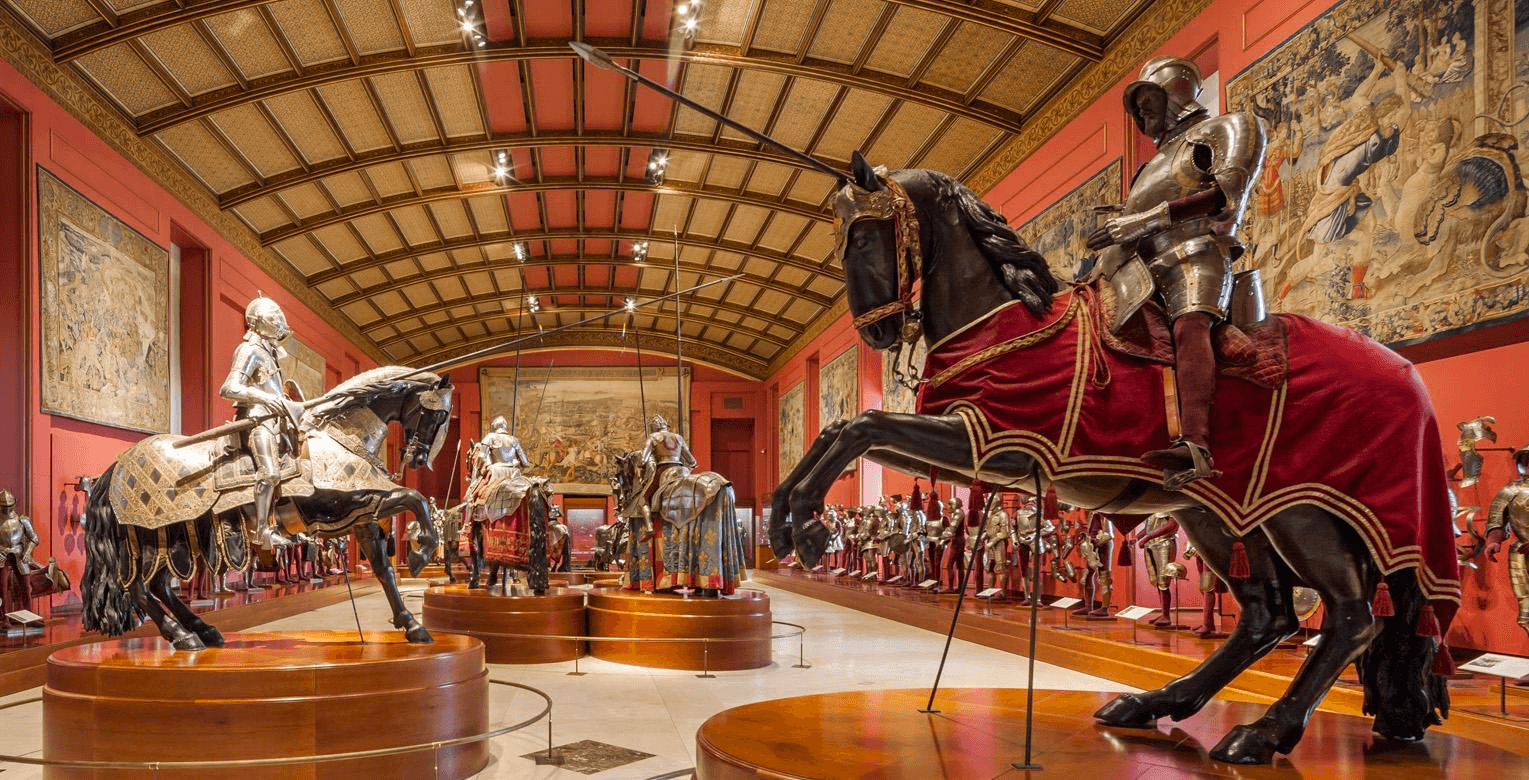
Dianggap sebagai salah satu yang terbaik di dunia, Gudang Senjata Kerajaan memamerkan koleksi besar baju zirah, senjata, dan artefak milik raja-raja Spanyol dan keluarga mereka.
Tips Berkunjung
Mengunjungi Istana Kerajaan Madrid bisa jadi hal yang memusingkan, mengingat ukurannya, jumlah ruangan, dan pamerannya. Berikut ini beberapa kiat untuk membantu Anda memanfaatkan kunjungan Anda sebaik-baiknya:
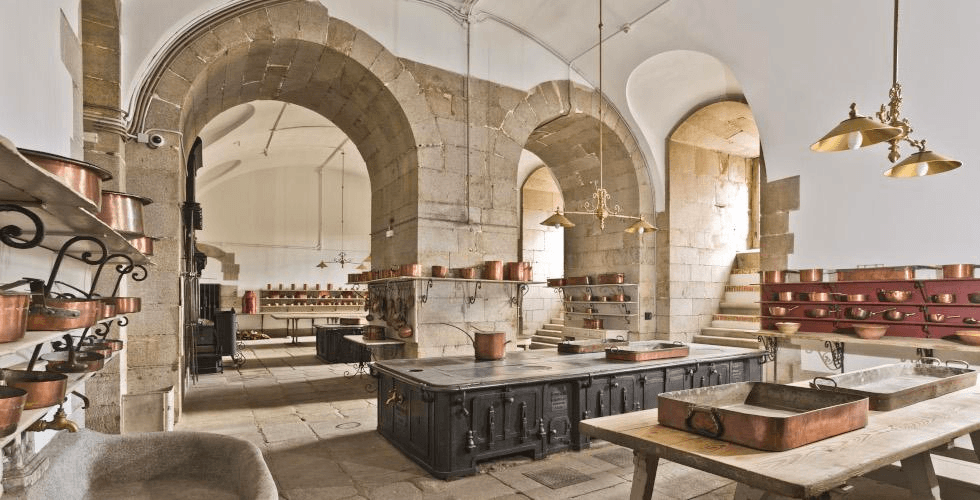
- Mengunjungi Dapur Kerajaan: Jika Anda ingin mengunjungi Dapur Kerajaan, Anda harus meminta tiket yang mencakup tur dapur, dan Anda harus berencana untuk tiba setidaknya satu jam sebelum dapur tutup. Harap dicatat bahwa dapur tidak tersedia selama jam masuk gratis.
- Sepanjang tahun, mungkin ada hari-hari dengan jam operasional yang dikurangi atau penutupan sebagian. Rencanakan tempat yang ingin Anda kunjungi dan lihatsitus web resmiuntuk jam operasional yang dikurangi atau penutupan sebagian guna membantu Anda merencanakan kunjungan Anda. Perhatikan juga bahwa Gudang Senjata Kerajaan memiliki jam operasional yang sedikit berbeda dari ruangan lain di istana.
- Untuk memanfaatkan kunjungan Anda sebaik-baiknya, ikuti tur berpemandu atau beli tur audio. Untuk tur audio, Anda dapat menyewa tablet fisik di museum atau mengunduh aplikasi seluler resmi dan membuka tur dengan kode aktivasi.
- Istana ini merupakan bangunan besar, dan Anda akan banyak berjalan kaki. Kenakan sepatu yang nyaman agar Anda dapat menikmati kunjungan Anda.
- Tempat ini memiliki jam masuk gratis mulai pukul 5 sore hingga 7 malam (April hingga September) atau pukul 4 sore hingga 6 sore (Oktober hingga Maret) pada hari Senin hingga Kamis, yang tersedia bagi warga negara Uni Eropa atau pemegang izin kerja Eropa. Namun, pada saat inilah tempat ini paling ramai dan tur berpemandu tidak disediakan, jadi jika Anda ingin menghindari keramaian, sebaiknya hindari periode ini.
Informasi Praktis
**Jam Buka:**
- Jam buka musim dingin (Oktober hingga Maret): Senin hingga Sabtu, pukul 10 pagi - 6 sore, Minggu pukul 10 pagi - 4 sore
- Jam buka musim panas (April hingga September): Senin hingga Sabtu, pukul 10 pagi - 7 malam, Minggu pukul 10 pagi - 4 sore
- Loket tiket dan tiket masuk Istana tutup satu jam lebih awal.
**Biaya: **12€ per tiket reguler hanya untuk istana; 16€ per tiket reguler untuk istana + dapur
**Stasiun metro terdekat: **Stasiun Opera (Jalur 2 dan 5)